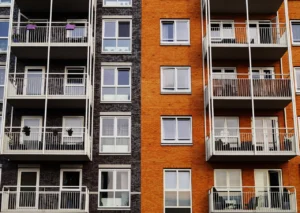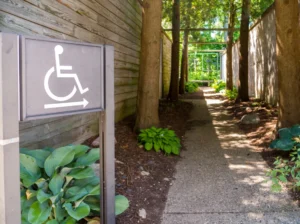How to Flip a House
Home flipping can be profitable – if you do it right.
 The exact profits you’ll get when flipping a home depend on the property you choose, the repairs and projects you undertake and other factors.
The exact profits you’ll get when flipping a home depend on the property you choose, the repairs and projects you undertake and other factors.
Home flipping has become quite popular again. In fact, according to property information firm ATTOM Data Solutions, over 9% of all home sales in the first quarter of 2023 were flipped – the second-highest level since at least 2000.
The typical flipper made a profit of about $56,000 – or 22.5% – on their initial purchase.
That’s only the median, though. The exact profits you’ll get when flipping a home depend on the property you choose, the repairs and projects you undertake and other factors. Want to make sure your home flip is a success? Here’s how experts say to go about it.
1. Determine how you’ll pay for it.
Unless you have enough cash to pay for a home outright, the first step in home flipping is to determine how you’ll pay for the property. If you already own a home or other investment property, a home equity loan could be an option. These let you borrow from your property’s equity, giving you a lump sum payment in return.
Many flippers also use hard money loans, which are short-term loans designed for investment properties.
“If you don’t personally have hundreds of thousands of dollars laying around, you can consider using hard money lenders,” says Danny Johnson, a longtime home flipper and owner of Danny Buys Houses in San Antonio. “Hard money lenders lend on distressed properties.”
In the event you do need a loan, find a lender early, and get preapproved first. This will give you an idea of what you can spend, as well as what interest rate you’ll pay. You should also find out what documentation you need to gather and how long the process might take.
2. Build your team.
Home flipping is usually a team effort. You’ll need a contractor, a lender, an inspector and, often, a real estate agent, too.
“One of the first things you should do if you’re preparing to flip a house is get your team in order,” says Zach Steinberg, general manager at real estate investment platform New Western in Dallas. “Find experienced contractors that are familiar working with investors and have solid references. If you’re using financing to purchase the property, make sure you shop around and get lenders that can close quickly.”
Get a Free Multifamily Loan Quote
Access Non-Recourse, 10+ Year Fixed, 30-Year Amortization
3. Find a property.
Finding the home you’ll flip is the next – and arguably most important – step in the process. Not only do you need to find a home that’s affordable and offers you plenty of room for profits, but you’ll want to focus on the location and eventual marketability of the property, too.
“In order to choose the right property you have to be open minded,” Steinberg says. “But the age-old real estate mantra is still very much alive – location, location, location matters.”
Johnson suggests buying in areas where properties sell within 60 days or less. This will ensure you’re not stuck with the property too long after rehabbing it.
You should also do your due diligence on the community. Is there an HOA or zoning rules that could impact your renovation? If there is, you’ll want to get the full details on those rules before buying there. As Matthew Roberts, a real estate attorney at Ligris + Associates in Boston, puts it, these “can drastically limit an owner’s right to perform certain upgrades.”
Once you know the area you want to buy in, you can use a real estate agent to help you find potential properties. Some flippers also target off-market properties and reach out to existing homeowners who may be willing to sell in their target area.
“To get the best deal, it’s best to look off-market,” says Mike Opyd, president of RE/MAX Next in Chicago. “Sending out flyers or letters to an area to entice people to sell is an idea, along with door knocking. The idea is to get a seller to sell at a discounted amount. A lot of times this means having to cast a large net to try and find a few diamonds in the rough.”
4. Run the numbers.
Once you find a potential property you might like to flip, it’s time to crunch the numbers. First, try to get an idea of what projects you’d like to take on, any repairs it needs, and how much those would cost. To do this, bring your general contractor along when touring the home. They can help you estimate many of these costs based on a walk-through of the property.
“You may want to have a contractor do an initial inspection of the house with you to put together a rehab estimate,” Steinberg says. “Since you’re trying to make a profit on the house, the one thing you can control is the rehab, specifically which materials you use for the rehab. So having an expert contractor who has experience working with investors can help save you money in the long run.”
Ideally, Johnson says, you want to purchase and repair a home for 70% to 75% of its after-repair value – or what you expect the home to be worth once you’ve rehabbed it. This will ensure you can make a solid profit once it comes time to sell. If you’re not sure the home will be worth on the back end, your real estate agent can help, or you can use comparable sales from other homes in the area.
If the numbers work, then make an offer on the property, and be sure to include an inspection contingency, which gives you the right to have the home inspected before closing the deal. This will help you spot any hidden repairs or issues that might be below the surface.
“The best thing to do is to make sure the numbers make sense and that there is room in the budget for any unknowns that come up,” Opyd says.
5. Rehab the property.
Repairing and renovating the home is next. Work with your contractor and put together a comprehensive list of what needs to be done, as well as estimated costs and timelines for each. Make sure to include the time it will take to get any necessary permits or approvals, too.
From there, you and your contractor can purchase the appropriate materials and get to work. Just remember to check in often to ensure the project is staying on track.
“This is not a set-it-and-forget type of venture,” Opyd says. “A flipper needs to be very involved and on-site constantly to make sure the project is moving along how it should and also at the budget that is set. Every dollar and day counts.”
Once you’ve finished the property, consider having the home reinspected to make sure everything is up to snuff. Then, if there are any remaining issues, you can fix them before putting the property on the market.
6. Market and sell it.
Finally, it’s time to list the home. Your agent can assist with this step, putting it on the local multiple listing service and helping you set an appropriate sale price. They can also field offers and negotiate on your behalf.
Keep in mind, though, not every flip is successful. So make sure you have a plan B in mind in case you can’t sell the home for what you’d like.
As Steinberg puts it, “If the flip doesn’t work out – do you have another exit strategy? Do you know if the property can be rented? It’s better to be prepared in case the unexpected happens.”
Source: U.S. News













 Accessibility
Accessibility